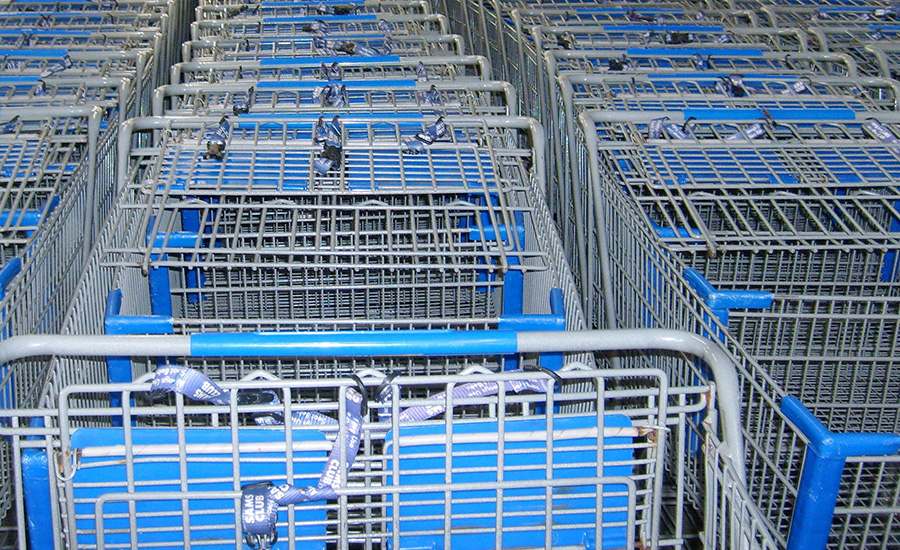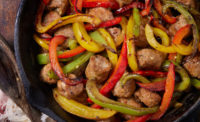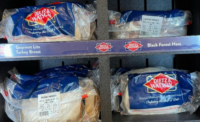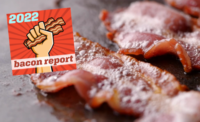With the fourth quarter of 2022 well underway, the U.S. consumer’s general economic mood is measured, to put it mildly. Nearly half (44%) of Americans say their financial situation is a little or a lot worse than a year ago, compared with 27% of Americans saying they expect their financial situation to be better one year from now.
“Number 1 on everybody’s shopping list is saving money,” said longtime supermarket and food industry analyst Phil Lempert. “So when people are going to that meat case, what they are looking for is the cheapest cuts that they can.”
The less-than-sunny consumer outlook is no mystery, with September food price inflation up 17.4% for center of the store items and up 12.3% for perishables, according to an IRI September survey. Compared with August 2019, prices across the food and beverage category were up 27.9%.
Meat had below-average inflation compared to total foods and beverages, with the average price per pound in the meat department across all cuts and kinds coming in at $4.60 in September 2022. The month-over-month inflation for the category was up 6.8%, compared with the latest 52-week view showing a 10.9% increase — continuing a trend of decelerating price increases. Volume sold is down, with total pounds sold for the meat department falling -2.5% compared with year-ago volumes.
Other consumer trends noted in the IRI survey include:
Grocery
- 83% of consumers shopped for groceries in person, down from 85% in August.
- 10% preferred click-and-collect and 8% opted for home delivery when purchasing groceries online.
- 4% of shoppers said they will buy all their groceries online within the next few months.
- 68% said they will buy all their groceries in person.
Foodservice
- 54% have ordered takeout meals in September, while half of U.S. households report having eaten on site at a restaurant.
- 18% have ordered from a restaurant for home delivery (down two points from August).
- 54% of consumers said they will continue to eat out as often, while 24% said they will cut back on restaurant spending.
Value proposition
Although consumers remain price-conscious, many still value their time as well, with time-crunched consumers opting for value-added protein products.
“Even before we started seeing this period of record inflation, the value-added meat category was seeing tremendous growth,” said Bridget Wasser, associate director of customer insights at Midan Marketing.
“With everything on consumers’ minds, the protein element of a meal is the first thing consumers decide on. Then the rest of the meal is planned in store,” she said, adding that the convenience of value-added products allows shoppers to enjoy crafted flavors without having to buy additional ingredients such as spices or marinades.
Other retailers are approaching value-added through in-store meat department services.
“There’s a bunch of retailers that are now aging beef,” Lempert said, calling out recent offerings from Hy-Vee and Kowalski’s stores in Minneapolis. “They’re doing well with their aged beef, which is certainly more expensive.”
Lempert said that although all demographics of shoppers are looking at prices, higher-end shoppers are less price sensitive and are looking for quality.
“The customer today wants value. That doesn’t mean price only. It means value for their money,” he said. “So maybe I’m not going to have steak as often as I used to have it, but when I do want to buy that steak I’m going to go for the more expensive cut, the aged cut, and be more satisfied with that meal.”
Trading down, not opting out
During times of economic pressure, consumers typically trade down to more affordable proteins rather than bypassing the meat case completely.
“Whether from beef to pork or from steaks to ground beef, shoppers have many opportunities to stretch their food dollar while enjoying fresh meat,” Wasser said.
According to the 2022 Midan Marketing Beef Attributes Insights Report, more than half of respondents said price was the most important factor when purchasing beef, but the second most important factor when purchasing beef was USDA grade, followed by brand.
Brand equity sells
“Given ongoing retail price inflation, many consumers are relying more heavily on brands as an assurance of quality in the meat purchases,” Wasser said. “In Midan's latest research, about a quarter of beef consumers considered brand either first or second when making retail beef purchases.”
Consumers’ brand preferences have favored retailers' private-label offerings.
“What matters more than the type of store is the consumer perception of the brand,” Wasser said. “Can consumers trust the retailer’s products, and does that retailer bring value other retailers aren’t bringing them. “
For many consumers, the grocery store they go to is a lifestyle brand.
“The store that you go to typically reflects your personality, reflects your household income, reflects who you are as a human being,” Lempert said.
Consumers’ relationships with retailers must be cultivated through consumer outreach such as offering more compelling coupons, curating newsletters with meal inspirations, and fostering social media communities, Wasser said.
“That will determine success during financially turbulent times,” she said, adding that transparency is increasingly essential. “There are a variety of opportunities in the meat case to tell our story.
Center-aisle products like cereal and plant-based protein alternatives are telling a story that the meat industry could own to capture consumers’ interest in protein and nutrition.”

.png?height=96&t=1647275041&width=96)


